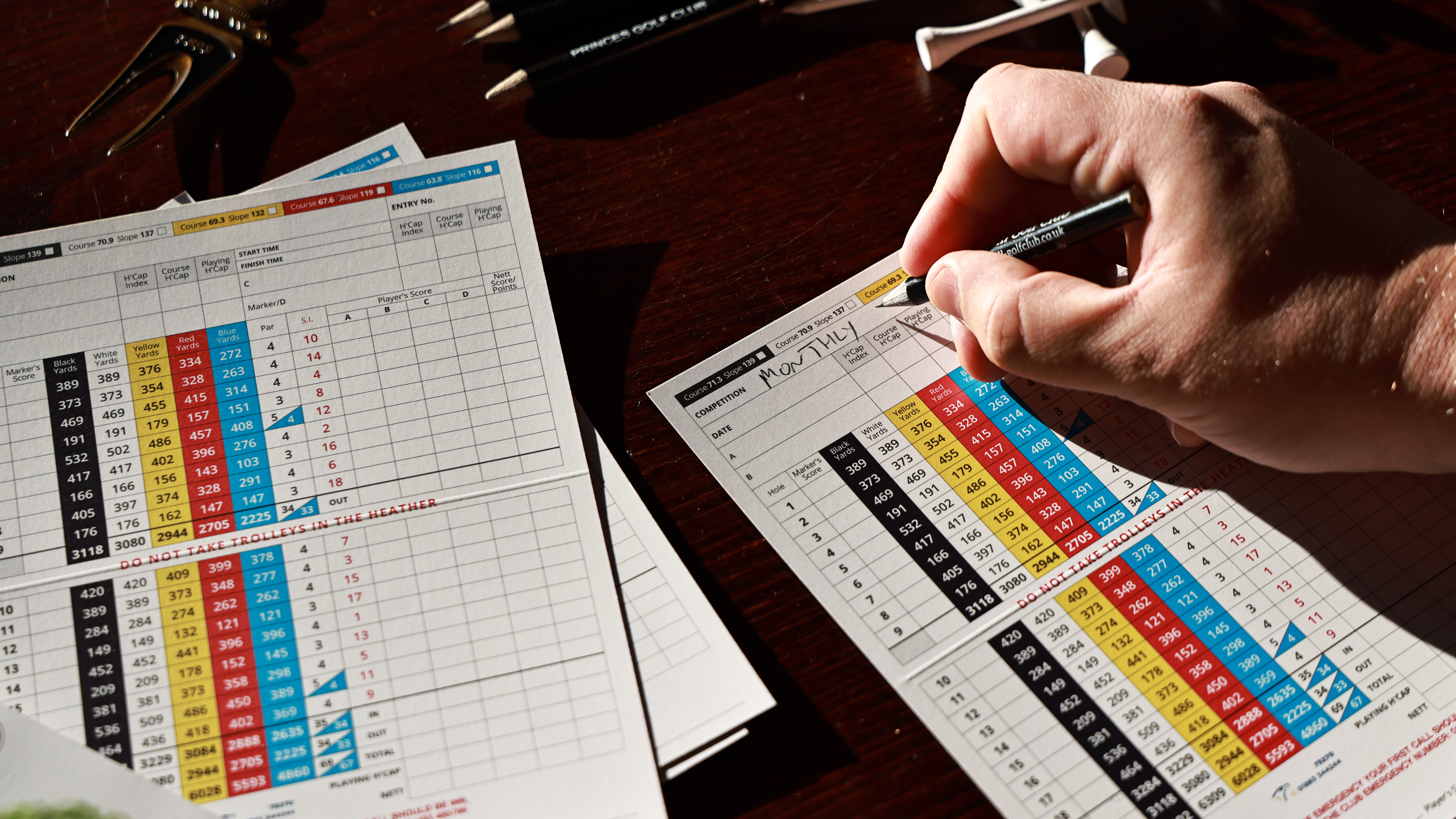What Is Considered A Low, Mid And High Handicap... And Where Do You Fit?
Once you have a handicap, you're generally considered to be either a low, mid or high handicap player


Since the launch of the World Handicap System in January 2020, a golfer's handicap index has been automatically calculated by taking their eight best score differentials from their most recent 20 rounds of golf.
A player's handicap is not designed to reflect their average score; instead, it's how they are likely to play on a golf course of average difficulty.
Golf handicaps fall into one of three different categories: low, mid and high.
A golfer with a handicap of 1-9 (a single figure player) is considered to have a low handicap; a golfer with a handicap of 10-19 is generally thought to be a mid handicapper, and a golfer with a handicap of 20 and above is seen as a high handicap player.
It's not set in stone and there's nothing official about this - it's just how golfers tend to get grouped.
Of course, you have your scratch player, too (0 handicap), although this golfer is often just labelled as a low handicapper.
Meanwhile, professionals, well.... they're in a different class entirely.
Subscribe to the Golf Monthly newsletter to stay up to date with all the latest tour news, equipment news, reviews, head-to-heads and buyer’s guides from our team of experienced experts.
The quest to become a single figure player is one of the biggest goals for the amateur player, something which has become easier in recent years with the option to put in scores from general play as well as how the current system operates.
However, to reach single digits in the golf world remains a very impressive accomplishment.

Many club golfers dream of being able to call themselves a single figure (low) handicap player
What Handicap Group Are You In?

What handicap group are you currently in?
A recent report by the USGA showed that the average handicap index for a male is 14.2 and 28.7 for female.
Digging a little deeper into the report, it shows what handicap index the golfers (in the US) are playing off:
Male
<0.0 1.99%
0.0 to 4.9 8.55%
5.0 to 9.9. 20.15%
10.0 to 14.9 26.72%
15.0 to 19.9 22.02%
20.0 to 24.9 12.01%
25.0 to 29.9 5.38%
30.0 to 34.9 2.05%
Female
<0.0 0.75%
0.0 to 4.9 1.38%
5.0 to 9.9. 2.53%
10.0 to 14.9 5.44%
15.0 to 19.9 10.64%
20.0 to 24.9 16.37%
25.0 to 29.9 19.72%
30.0 to 34.9 16.95%
35.0 to 39.9 11.65%
40.0 to 44.9 6.75%
45.0 to 49.9. 3.72%
50.0 to 54.0 4.10%
So, for the males, the mid 10-19 handicaps make up nearly 50 per cent, with just over 30 per cent sitting in the low handicap bracket.
For the female golfers, meanwhile, there are under 20 per cent in the low and mid handicaps.
Does it matter? Not really - it's the enjoyment of the game that matters most, not your handicap.
However, knowing what level you play at and whether you're considered to be a low, mid or high handicap player can be helpful when it comes to buying golf equipment, because most manufacturers produce different clubs to suit these different skills levels.
To give you a basic example, which might be helpful if you're new to the game. If you're currently a high handicap player, you should really be playing with the best golf clubs for high handicappers.
Then, as your game improves, you can start to explore clubs designed more for mid and low handicap players.

Michael has been with Golf Monthly since 2008. A multimedia journalist, he has also worked for The Football Association, where he created content to support the England football team, The FA Cup, London 2012, and FA Women's Super League. As content editor at Foremost Golf, Michael worked closely with golf's biggest equipment manufacturers and has developed an in-depth knowledge of this side of the industry. He's a regular contributor, covering instruction, equipment, travel and feature content. Michael has interviewed many of the game's biggest stars, including seven World No.1s, and has attended and reported on numerous Major Championships and Ryder Cups around the world. He's a member of Formby Golf Club in Merseyside, UK.
You must confirm your public display name before commenting
Please logout and then login again, you will then be prompted to enter your display name.